

Designation:VF-8 Logan Veritech Fighter |
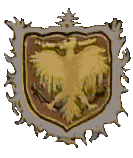
|
||||
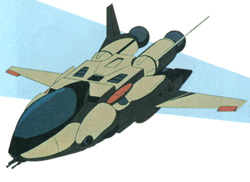
|
|||||
| Fighter | Battloid | |
|---|---|---|
| Total Length: | 6.29m | - |
| Total Depth: | - | 4.55m |
| Total Height: | 2.29m | 5.35m |
| Total Breadth: | - | 3.00m |
| Total Wingspan: | 6.29m | - |
| Total Dry Weight: | 6.5 tons (metric) |
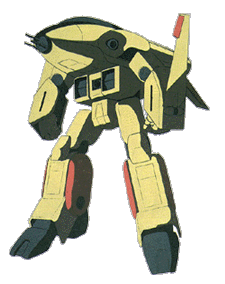
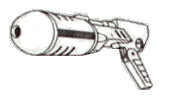
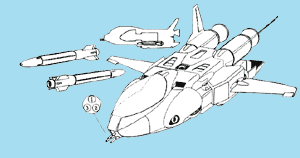
2 hardpoints are mounted on the lower hull/forearms. Each hardpoint can typically carry:
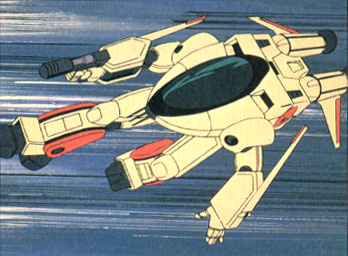
The skin of the Logan is composed of an advanced titanium-steel alloy, except that on the wings, which is made from a low-mass Chobham armor like that on the AGACS. The armor stops all small arms fire, provides good protection against heavier infantry weapons, such as a 12.7mm machinegun round, and fair resistance to light mecha-mounted weaponry, such as the Zentraedi 22.3mm HE autocannon round. The armor on the wings is considerably stronger, allowing them to be used as parrying shields in close quarters while in Battloid mode. The Logan's cockpit is a very exposed structure in all flight and ground profiles. This makes the pilot a very vulnerable target. The Logan provides full protection from nuclear, biological, and chemical hazards, using an overpressure cockpit environment activated by radiation and hazardous chemical sensors, or manually when biological warfare conditions are anticipated. The internal consumables supplies can provide atmosphere for one day maximum.
When the Tactical Space Corps and REF Navy were formed, both of these branches of the RDF decided to base two basic types of combat aircraft aboard their capital vessels: an interceptor/dogfighter to attack enemy mecha, and a heavy fleet defense/strike spacecraft to go after gunboats and mecha formations at long ranges. The REF Navy, with its impending journey into unknown space, felt a Veritech was necessary for true multi-role and multi-environment capabilities, and chose for their interceptor the powerful VF-4 Lightning, then in service with the RDF Spacy; in addition, the REF used the VF-6 Alpha in limited numbers in space, as a generalized all-purpose aerospace fighter. The ASC-TSC, on the other hand, would not need to strike at alien worlds, and atmospheric operations were adequately covered by the TAF's forces. Hence, no pressing need was seen for a Battloid mode in space, and the non-transformable but agile AF-5 Pirate entered service in 2018 as the TSC's interceptor. Over the next half-decade, the Department of Aerospace Operations of the Armies of the Southern Cross began to regret its choice. War games conducted with remotely-controlled Zentraedi mecha showed a viable role for a Battloid in space dogfights alongside the more traditional aerospace fighter. Because of this, in 2023 the Tactical Armored Space Corps was created, with a mandate to procure and deploy a transformable space fighter to replace the Pirate.
An upgraded version of the Alpha was briefly considered, but eventually ruled out. This aircraft had too intrinsically little reaction mass tankage to be viable as the Southern Cross' only space dogfighter, and the idea of creating a booster for it was an anathema to the space-cramped vessels of the TSC (indeed, the Beta did not enter wide use in the REF until its newer classes of ship began to come off the shipyards).
At the same time, in the early-2020's, the Southern Cross teams developed their smaller protoculture energizers and engines. It now became possible to create a tiny (and hence agile) Veritech with a lethal energy weapons package and excellent engine performance.
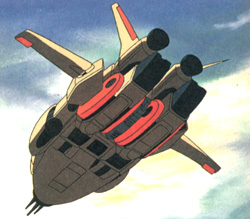 Like its Pirate predecessor,
this mecha was very small, barely 6.3 meters long. The small size meant a
small target, but also left very little in the way of armor. This fact, and that
of the exposed pilot's compartment made the mecha somewhat unpopular
with its pilots. However, in the Logan's defense, it must be added that slugging
it out with heavy mecha on the ground was not the tactic the Logan was
designed for: the small size, coupled with the remarkably robust engines
and power delivery system, made for a very nimble Veritech, and a notoriously
difficult target. The Logan was equipped with 16 protoculture cells. Because of this,
if all weapons were fired simultaneously, the Logan could deliver 23 MJ of energy
on an opponent. This was very lethal indeed, and admirably suited for its
design philosophy: to outfight mecha in space. Though the Logan was relatively slow
in an atmosphere, because of its shape, the engines and boosters on this craft
made it capable of tremendous accelerations, a significant advantage in combat,
especially in the area of missile avoidance. Its shape and simple transformation
sequence allowed a large amount of reaction mass tankage, substantially increasing
the delta-v available.
Like its Pirate predecessor,
this mecha was very small, barely 6.3 meters long. The small size meant a
small target, but also left very little in the way of armor. This fact, and that
of the exposed pilot's compartment made the mecha somewhat unpopular
with its pilots. However, in the Logan's defense, it must be added that slugging
it out with heavy mecha on the ground was not the tactic the Logan was
designed for: the small size, coupled with the remarkably robust engines
and power delivery system, made for a very nimble Veritech, and a notoriously
difficult target. The Logan was equipped with 16 protoculture cells. Because of this,
if all weapons were fired simultaneously, the Logan could deliver 23 MJ of energy
on an opponent. This was very lethal indeed, and admirably suited for its
design philosophy: to outfight mecha in space. Though the Logan was relatively slow
in an atmosphere, because of its shape, the engines and boosters on this craft
made it capable of tremendous accelerations, a significant advantage in combat,
especially in the area of missile avoidance. Its shape and simple transformation
sequence allowed a large amount of reaction mass tankage, substantially increasing
the delta-v available.
In 2026, the TASC began to replace thousands of the TSC's AF-5 Pirates with its own Logan. When the Masters arrived in Earth space, the Logans were among the first mecha thrown into the fray, especially when one of the TASC's ground bases was suddenly attacked by Bioroids. Unfortunately, the Masters' tactics did not agree with the Logan; the Bioroids' Hovercraft were not really meant to be aircraft, the Masters instead relying on their Assault Carriers to destroy any opposing airborne mecha before releasing the Bioroids. This meant that the Logan had to slug it out with the slow and heavily armored Bioroids on their terms, where the Logan was outmatched, or that they were used against the Assault Carriers, which were so superior that the Logans had neither speed nor firepower advantages. Quite soon in the war, the Logans were supplanted by the far more robust and versatile AGACS.
Go to the Logan Image Gallery.
Return to Southern Cross Veritech Index.
Go to Robotech Reference Guide Home Page.
Robotech (R) is the property of Harmony Gold. This document is in no way intended to infringe upon their rights.
Content by Peter Walker and Pieter Thomassen, with Rob Morgenstern
HTML by Robert Morgenstern (rmorgens@ieee.org)